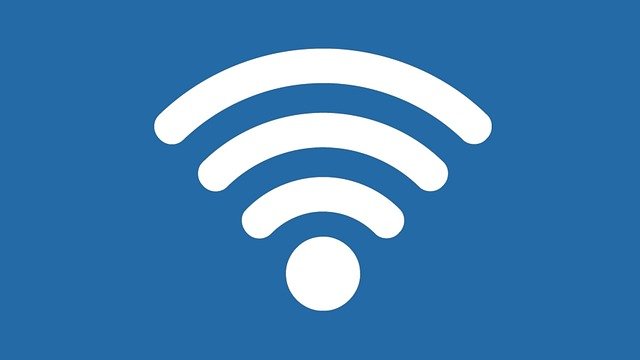Terahertz Communications: The Next Frontier in Wireless Technology
As we push the boundaries of wireless communication, researchers are exploring uncharted territories in the electromagnetic spectrum. Terahertz waves, long overlooked due to technical challenges, are now emerging as a promising frontier for ultra-fast, high-capacity wireless networks. This revolutionary technology could reshape our digital landscape, offering unprecedented data rates and opening new possibilities for connectivity.

The unique properties of terahertz waves make them particularly attractive for wireless communications. They offer extremely high bandwidth, potentially allowing for data rates in the terabits per second range. This is orders of magnitude faster than current wireless technologies. Additionally, terahertz waves have shorter wavelengths than microwaves, enabling more focused and directional transmissions, which can improve spectral efficiency and reduce interference.
Historical Context and Technological Developments
The exploration of terahertz waves for communications is not entirely new. Scientists have been aware of this part of the electromagnetic spectrum for decades, but practical applications were limited by the lack of suitable technology. Early research in the 1990s and 2000s focused primarily on imaging and sensing applications, such as security scanners and material analysis.
The turning point came in the mid-2010s when advancements in semiconductor technology, particularly in silicon-germanium and gallium nitride materials, enabled the development of more efficient terahertz emitters and detectors. Concurrently, progress in photonics and quantum cascade lasers opened new avenues for generating and manipulating terahertz waves.
Current Industry Trends and Research Directions
The telecommunications industry is showing increasing interest in terahertz communications as a potential solution for the ever-growing demand for bandwidth. Several major tech companies and research institutions are investing heavily in this area, with a focus on developing practical, commercializable systems.
One significant trend is the exploration of terahertz communications for short-range, high-capacity links. This could be particularly useful in data centers, where massive amounts of data need to be transferred between servers over short distances. Researchers are also investigating terahertz links for backhaul networks, which could significantly increase the capacity of mobile networks.
Another emerging area is the integration of terahertz communications with existing and future wireless standards. While terahertz technology is not expected to replace current cellular networks, it could complement them by providing ultra-high-capacity hotspots in densely populated areas or specific high-demand locations.
Technical Challenges and Potential Solutions
Despite the promise of terahertz communications, several technical challenges need to be addressed before widespread adoption becomes feasible. One of the main obstacles is the high atmospheric absorption of terahertz waves, which limits their transmission range. This is particularly problematic for outdoor applications and long-distance communications.
Researchers are exploring various approaches to overcome this limitation. One promising direction is the development of adaptive beamforming techniques, which can dynamically adjust the transmission path to minimize atmospheric absorption. Another approach involves using artificial intelligence algorithms to predict and compensate for signal degradation in real-time.
Another significant challenge is the development of efficient and cost-effective terahertz components. Current terahertz systems often rely on expensive, specialized equipment, which is not suitable for mass-market applications. Efforts are underway to develop integrated terahertz circuits using standard semiconductor processes, which could dramatically reduce costs and increase accessibility.
Potential Applications and Impact
The potential applications of terahertz communications are vast and could revolutionize various sectors. In addition to enhancing existing wireless networks, terahertz technology could enable entirely new use cases.
One exciting possibility is ultra-high-definition holographic communications. The enormous bandwidth provided by terahertz links could support the transmission of highly detailed, real-time 3D images, potentially making Star Wars-style holographic conversations a reality.
In the field of virtual and augmented reality, terahertz communications could eliminate the need for wired connections, allowing for truly immersive and mobile experiences. This could have significant implications for gaming, education, and remote collaboration.
Terahertz technology also holds promise for industrial applications. In smart factories, for instance, it could enable wireless control of robotic systems with microsecond latency, far surpassing the capabilities of current wireless technologies.
Regulatory Considerations and Standardization Efforts
As with any new wireless technology, the development of terahertz communications raises important regulatory questions. Currently, most of the terahertz spectrum is unallocated, presenting both opportunities and challenges for regulators and industry stakeholders.
Several international bodies, including the International Telecommunication Union (ITU) and the Institute of Electrical and Electronics Engineers (IEEE), are working on standards and regulations for terahertz communications. These efforts aim to ensure interoperability, manage potential interference issues, and create a framework for the responsible development of terahertz technology.
One key consideration is balancing the needs of different applications. While communications will likely be a major use case for terahertz waves, other fields such as astronomy and Earth observation also rely on this part of the spectrum. Regulators will need to carefully manage these competing interests to maximize the benefits of terahertz technology across various domains.
Conclusion
Terahertz communications represent a fascinating frontier in wireless technology, offering the potential for unprecedented data rates and new applications. While significant technical challenges remain, ongoing research and development efforts are bringing this technology closer to practical realization.
As we continue to push the boundaries of wireless communications, terahertz technology may well play a crucial role in shaping our connected future. From ultra-fast data centers to immersive holographic communications, the possibilities are both exciting and transformative. As researchers, industry leaders, and regulators work together to overcome the remaining hurdles, we may soon find ourselves on the cusp of a new era in wireless connectivity, powered by the immense potential of terahertz waves.





